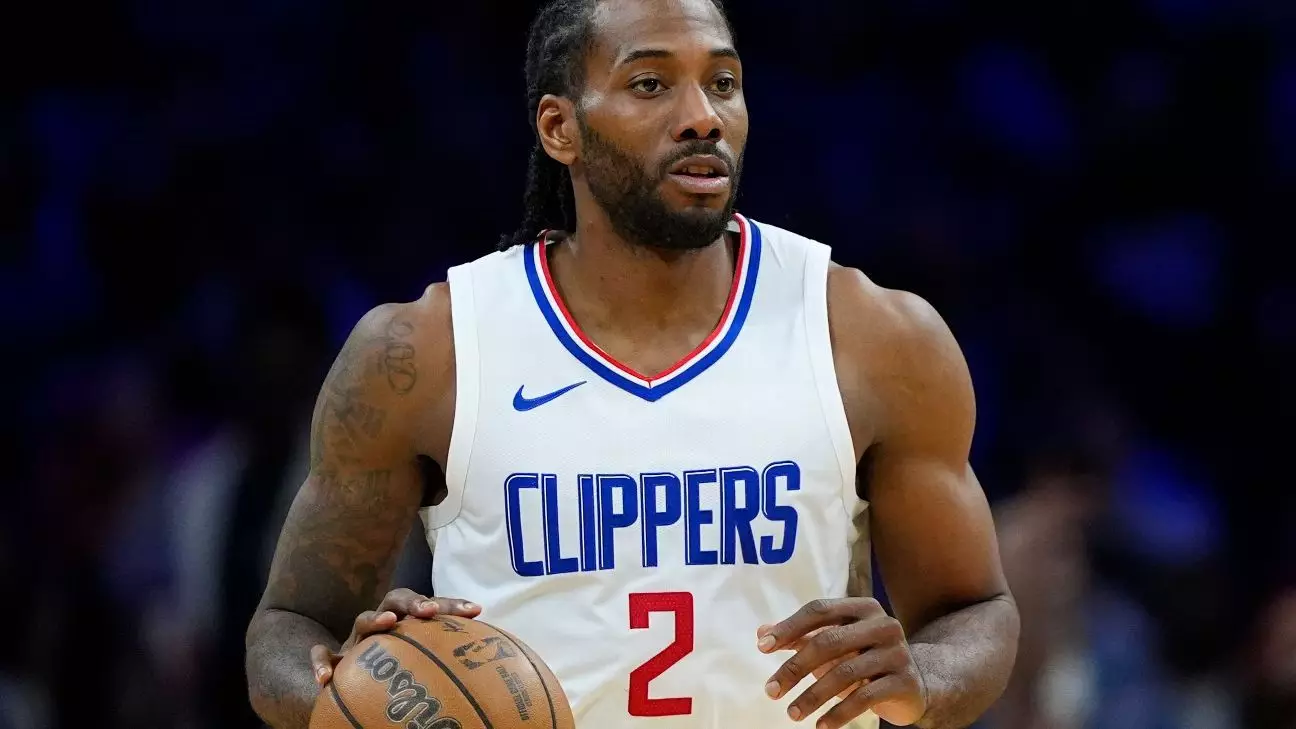The health of star forward Kawhi Leonard remains a pressing issue for the LA Clippers as the NBA season approaches. Recently, Clippers president Lawrence Frank disclosed that swelling in Leonard’s problematic right knee has diminished substantially. Yet, the team is adopting a conservative strategy regarding his participation in training camp, emphasizing a careful management of his long-term health. Instead of rushing Leonard back into competitive drills, the focus will be on rehabilitative and strength-building exercises designed to foster a complete recovery.
Throughout the previous season, Leonard’s knee has been a source of ongoing concern. Following a successful surgery, he faced complications that ultimately sidelined him for critical moments. The Clippers are evidently exercising caution based on the lessons learned from Leonard’s previous attempts at a comeback, particularly evident during the playoffs when he briefly returned only to suffer setbacks soon after. Frank’s cautious demeanor and the decision to keep Leonard off the court demonstrate a recognition of the complexities inherent in knee injuries.
Frank and head coach Ty Lue are emphasizing a forward-looking philosophy in their approach to Leonard’s injury management. The aim is not merely to prepare him for the upcoming season but to solidify his durability for the long haul. Frank articulated a commitment to not overexert Leonard, inspired by the misfortunes previously experienced when the player felt compelled to return before he was fully ready. This mentality underscores the organization’s recognition that star players have finite windows for peak performance, and exacerbating injuries could compromise those opportunities.
The focus on strength training highlights a growing awareness in sports management about the need not just for quick fixes but holistic health strategies. Leonard’s knee issues prompted discussions on preventative care and injury management methodologies that might benefit not only him but potentially other players dealing with similar physical concerns.
While Leonard recuperates, the Clippers are thrust into a phase of uncertainty regarding their roster dynamics. The impact of his absence looms large as teammates adapt to the evolving lineup. While players will inevitably step up, the chemistry that exists when Leonard is an active participant cannot be replicated easily. Lue will face the challenge of keeping the team’s morale high and fostering an adaptable game strategy that plays to the strengths of the remaining players.
Moreover, Leonard’s situation influences the expectations for the upcoming season. Without their primary offensive weapon, the team must recalibrate its aspirations for success. Other players will need to step into leadership roles, which could lead to unexpected performances but also increases the pressure on those who are not accustomed to carrying a team. The long-term ramifications of Leonard’s recovery could fundamentally reshape the Clippers’ identity as a squad in a hyper-competitive Western Conference.
Leonard’s situation is indicative of a broader trend in professional sports where management acknowledges the paramount importance of athlete health over immediate performance gains. Cases like his underscore the often-turbulent relationship between player aspirations and medical realities. Players historically have been known to push through pain, motivated by competitive spirit and external expectations. However, recent discussions in the league regarding mental health and the physical toll of intense competition illustrate a shifting paradigm.
Athletes like Leonard—who display immense dedication and a desire to contribute—must now consider prioritizing their long-term livelihood over short-term gains. The shift in perspective is likely to resonate within locker rooms, prompting discussions surrounding injury protocol, recovery best practices, and overall athlete welfare.
The Clippers’ commitment to safely managing Kawhi Leonard during his recovery signals a potential turning point in athlete injury management practices. As the season looms, the organization must navigate these waters delicately, ensuring that Leonard receives the care he needs while still preparing the team for the competitive challenges ahead.
The overall goal should remain not just to achieve success in the coming season but to foster an environment that promotes longevity and sustained performance. Monitoring the evolution of Leonard’s situation will be pivotal; if they manage it correctly, it could serve as a critical case study for other teams in the league. As the Clippers traverse this uncertain terrain, their approach may define not only Leonard’s career trajectory but also the future of how athlete health is prioritized across the entire sports landscape.


Leave a Reply